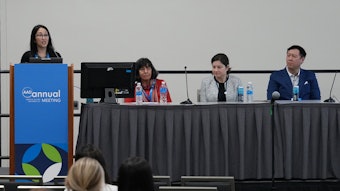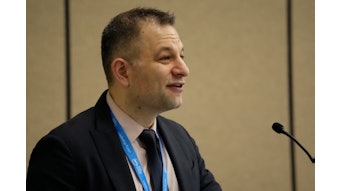A compendium of itch
Specialists caution there’s more to itch than meets the eye.

A patient presents with persistent pruritus concentrated at the flexures. Atopic dermatitis (AD), or eczema, seems to be the straightforward conclusion. But what if there’s more to it?
Every dermatologist has been here. In the March 11 session, F110 – Itch Tales: Looking Beyond Atopic Dermatitis, attendees reexamined the heterogeneity of AD as well as the spectrum of similar dermatoses that can make diagnosis a challenge. Illnesses such as genetic disorders, autoimmune diseases, neurogenic or systemic syndromes, and even other inflammatory dermatoses all share similar characteristics to AD, but deep down, their origin, composition, and necessary course of treatment are far from the same.
When confronted with these difficult cases, dermatologists must rely on their two primary implements, said session director Raj J. Chovatiya, MD, PhD, MSCI, FAAD, clinical associate professor at Rosalind Franklin University Chicago Medical School in Chicago.
Patient history, physical exam
It is imperative not to jump to conclusions at first glance. Gathering correct information and investing in the clinical diagnosis of itch should be routine in daily practice.
“A detailed history with the ‘right’ questions can make a big difference,” said Dr. Chovatiya.
Equally important is a comprehensive assessment of a patient’s visual manifestations, particularly rash and inflammation along with placement and severity. A correct — or incorrect — diagnosis may depend on very subtle clues.
“Skin signs, symptoms, comorbidities, and quality of life impacts can be very different from individual to individual, along with the overall trajectory of the disease as well as treatment response,” Dr. Chovatiya said.
Case analysis
The session’s panel of speakers analyzed a collection of real-world clinical cases where patients originally were diagnosed with atopic dermatitis but upon reexamination had a mimicking condition.
In one such case, an infant was diagnosed with early-onset AD and was later found to have a nutritional deficiency. The key indicators of this corrected conclusion were the specific configuration of the eczematous lesions in a periorificial and perineal distribution along with a medical history that that was not entirely consistent with infantile AD.
Another case examined an adult patient with suspected AD involving the distal extremities that did not respond to targeted systemic therapy. In this instance, psoriasis was the true culprit.
Real-life application
The panelists’ chief objective was to demonstrate that atopic dermatitis is “not all encompassing of every itchy, dermatitic eruption,” said Dr. Chovatiya.
“We’re living through the greatest era of AD research, and we finally have safe, targeted options for our patients, with many more to come,” he said. “However, the right therapies only work for the right diagnosis. If you treat incorrectly, your patients aren’t going to get better, and you may create new problems.”
One of the newer therapy alternatives is topical non-steroidals that have proven safe and effective for long-term use in a full-body application. Other examples include oral medicines that use small molecules to target core signaling pathways and injectable biologics that directly inhibit key cytokines.
“Though AD is common, every single patient with inflamed skin, eczematous changes, and pruritus does not have AD,” Dr. Chovatiya said. “Always keep a broad perspective before homing in on the diagnosis.”











